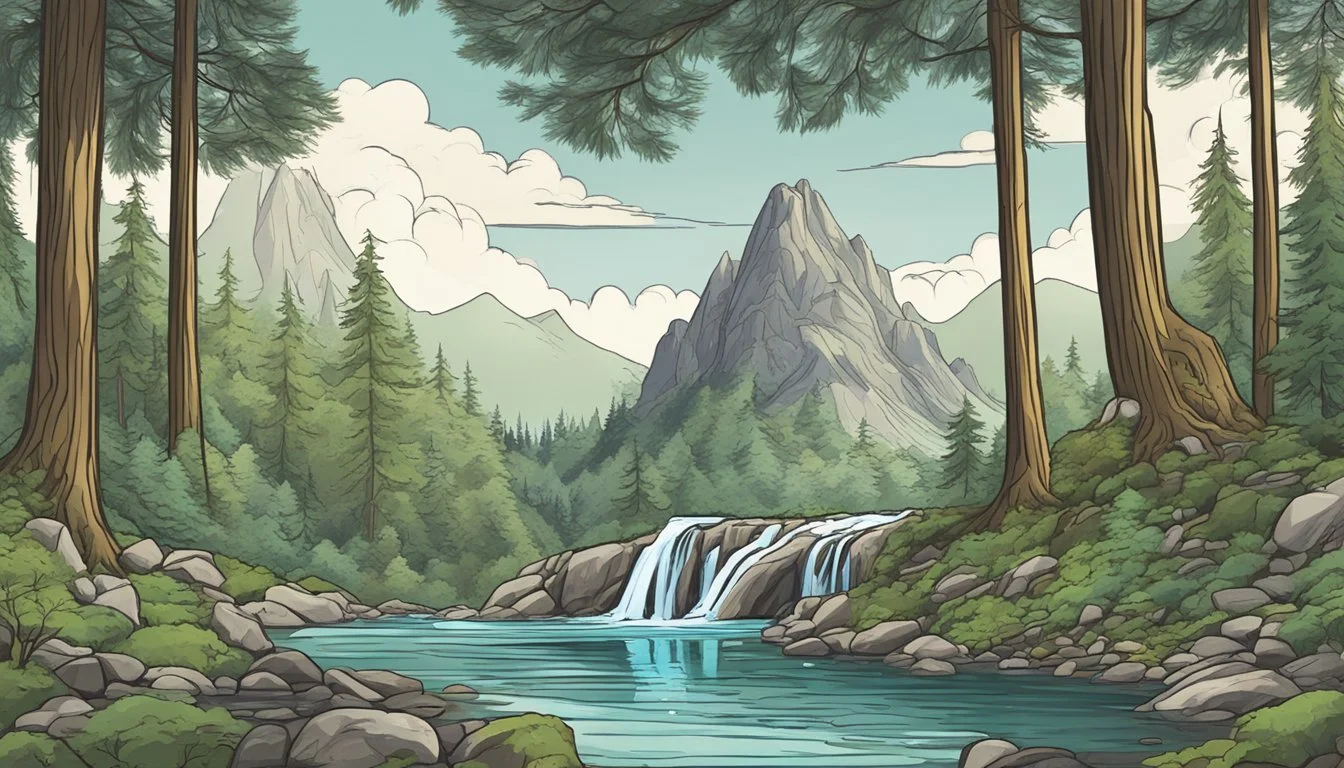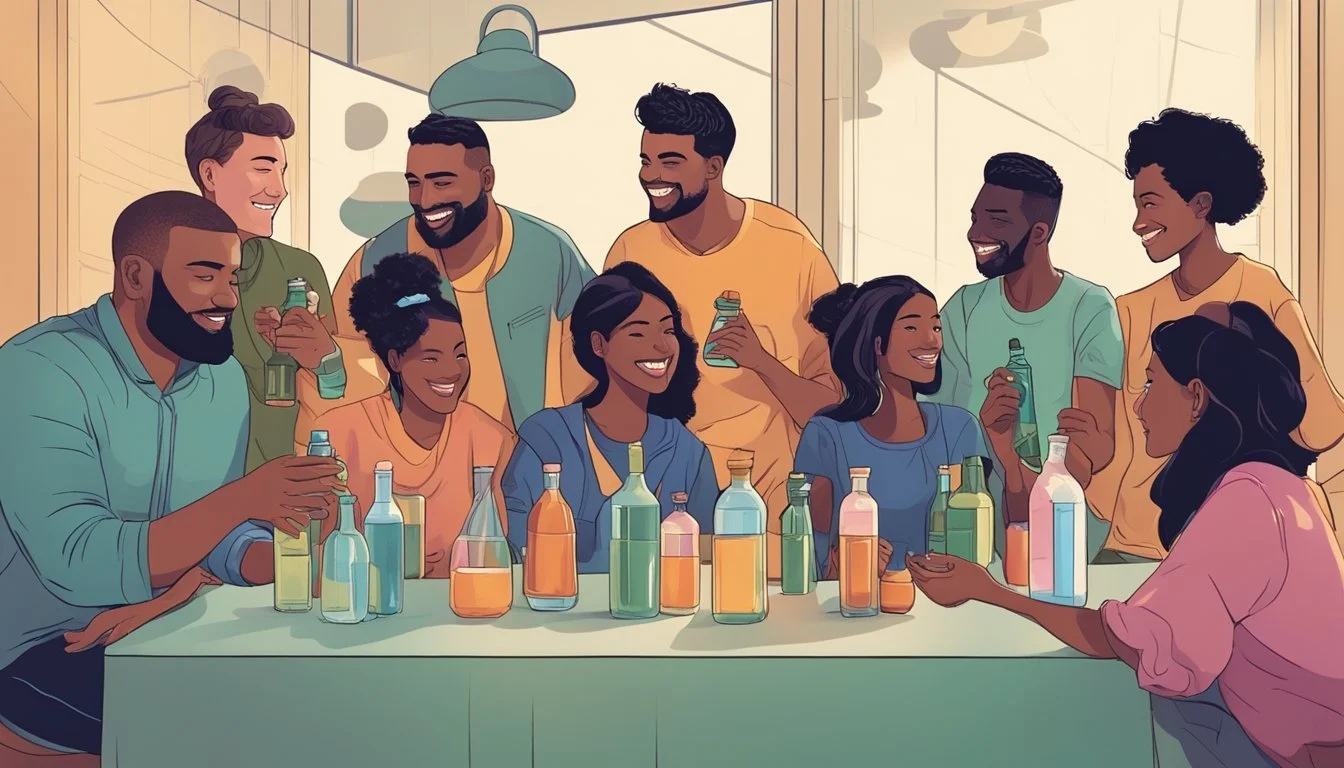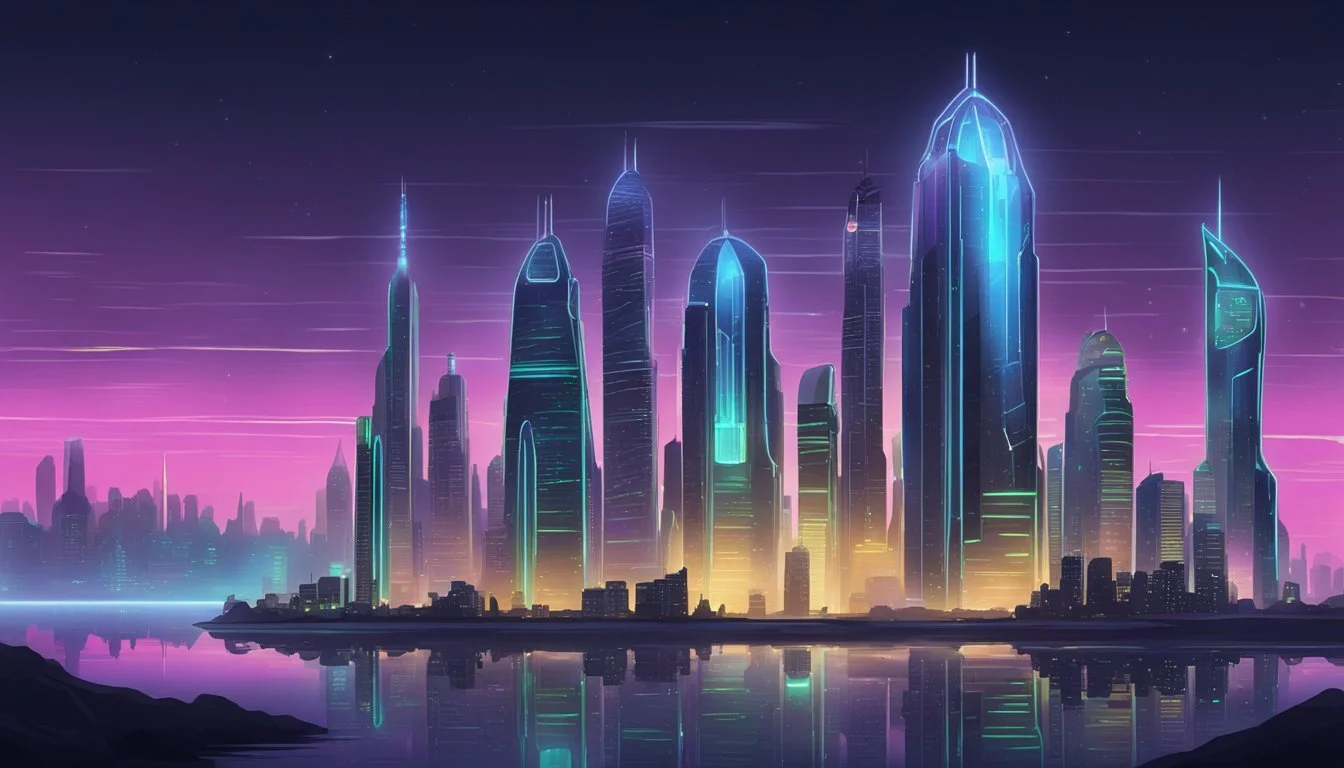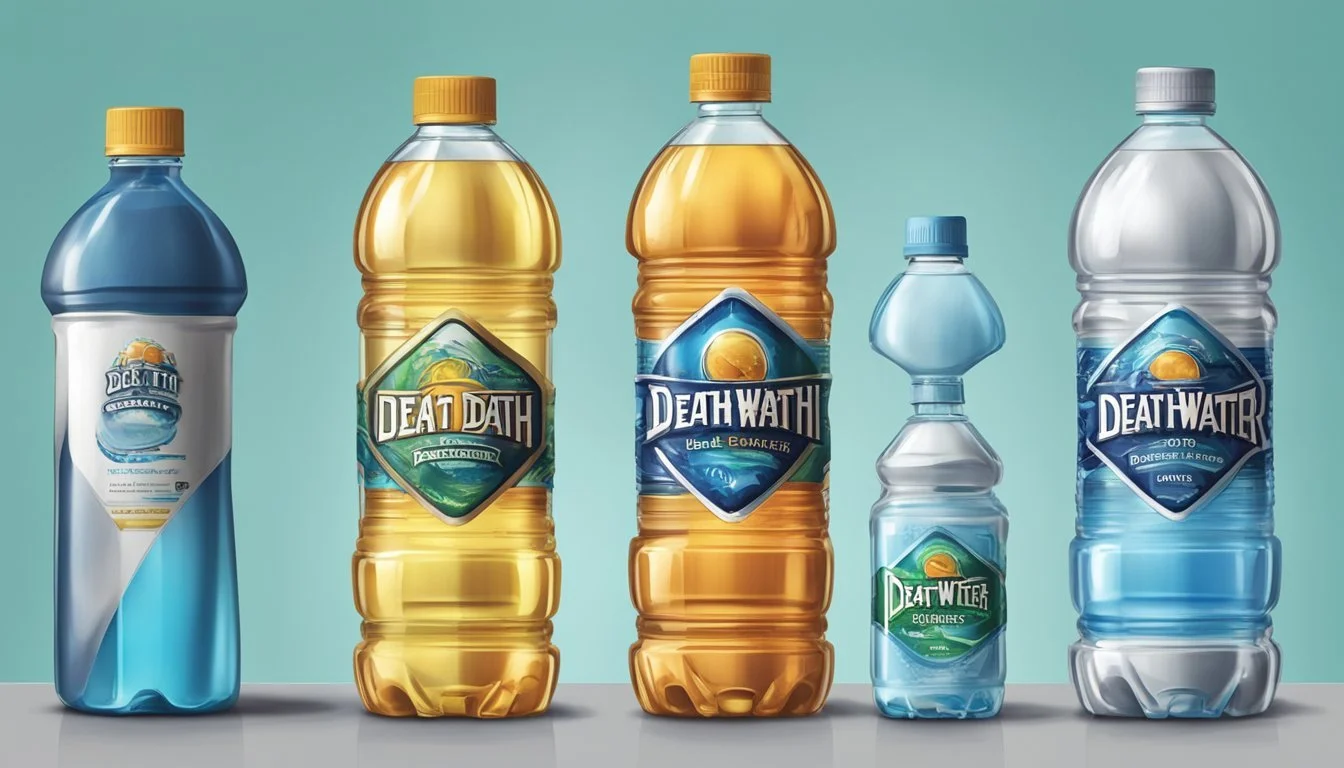Is Liquid Death the Best Bottled Water?
Trendy Packaging Meets Pure Mountain Spring
Liquid Death has disrupted the bottled water industry with its bold branding and unique packaging. This unconventional water company packages mountain water in tall aluminum cans, reminiscent of beer cans. Liquid Death's water is sourced from the Austrian Alps and is available in both still and sparkling varieties.
The brand's catchy slogans like "Murder Your Thirst" and "Death to Plastic" have captured consumer attention. Liquid Death's use of recyclable aluminum cans aligns with growing environmental concerns about plastic waste. This eco-friendly approach appeals to sustainability-conscious consumers looking for alternatives to traditional plastic water bottles.
Despite its edgy marketing, Liquid Death is simply high-quality water in a can. The company has experienced rapid growth since its founding, attracting investors and expanding distribution. Liquid Death's success demonstrates how innovative packaging and clever branding can transform a commonplace product like water into a trendy beverage option.
The Emergence of Liquid Death
Liquid Death burst onto the beverage scene with a bold mission and unconventional branding. The company's unique approach quickly captured attention and disrupted the bottled water market.
Founding and Mission
Liquid Death launched in 2019 with a simple product: water in a tallboy can. The brand's mission was to make water consumption more appealing and reduce plastic waste. By packaging water in aluminum cans, Liquid Death offered a recyclable alternative to plastic bottles.
The company aimed to make drinking water fun and edgy. Their slogan "Murder Your Thirst" and skull-adorned cans stood out in the typically sedate water market. This provocative branding resonated with younger consumers and those seeking healthier beverage options.
Liquid Death's marketing strategy leaned heavily on social media and viral content. The brand's irreverent tone and eye-catching designs sparked conversations and shares online, fueling rapid growth.
Mike Cessario's Vision
Mike Cessario, a former Netflix creative director, founded Liquid Death. His background in advertising shaped the brand's distinctive identity. Cessario recognized that many people found water boring compared to unhealthy alternatives.
He aimed to make water as exciting as energy drinks or beer. By adopting the aesthetics of punk rock and heavy metal, Cessario created a brand that appealed to health-conscious consumers who didn't want to sacrifice their edgy image.
Cessario's vision extended beyond marketing. He saw Liquid Death as a way to promote sustainability and challenge the beverage industry's reliance on plastic. The brand's success demonstrated that consumers were ready for a fresh take on healthy hydration.
Product Range
Liquid Death offers a diverse selection of beverages, ranging from water to flavored options. The brand has expanded its lineup to cater to various tastes and preferences while maintaining its edgy image.
Varieties of Liquid Death Offerings
Liquid Death's core product is canned water, available in both still and sparkling varieties. The brand packages its water in distinctive aluminum cans, setting it apart from traditional plastic bottled water. Liquid Death sources its water from the Austrian Alps, emphasizing its purity and quality.
In addition to plain water, the company has introduced flavored sparkling waters. These include unique options like "Severed Lime" and "Berry It Alive," which align with the brand's bold marketing approach. Liquid Death also offers a line of flavored still waters, providing non-carbonated alternatives for those who prefer flat water with a twist.
From Sparkling Water to Iced Tea
Expanding beyond water, Liquid Death has ventured into the iced tea market. The brand offers canned iced tea varieties that maintain its signature irreverent branding. Flavors include "Rest in Peach" and "Armless Palmer," a play on the classic Arnold Palmer drink.
Liquid Death's iced teas are made with real brewed tea and fruit juices, catering to consumers seeking alternatives to sugary beverages. The teas come in the same tall, slim cans as their water products, creating a cohesive product line.
By diversifying its product range, Liquid Death has positioned itself as more than just a water company. It now competes in multiple beverage categories while maintaining its distinctive brand identity and commitment to sustainability through aluminum packaging.
Branding and Marketing Strategy
Liquid Death's unconventional approach to branding and marketing has propelled the canned water company to rapid success. Their strategy combines edgy visuals, irreverent humor, and social media savvy to stand out in the beverage industry.
Edgy and Memorable Promotion
Liquid Death's branding centers on a punk-inspired aesthetic featuring a prominent skull logo and bold black-and-gold cans. The company's tagline "Murder Your Thirst" exemplifies their provocative marketing style. This edgy approach extends to their product names, with offerings like "Sparkling Water" and "Still Water" renamed to "Sparkling Death" and "Still Death."
Their promotional campaigns often push boundaries, such as the "Deadliest Stuff on Earth" ad that humorously exaggerated the product's "deadly" nature. Liquid Death has also collaborated with celebrities like Travis Barker to create limited-edition products, further enhancing their rebellious image.
Social Media Impact
Liquid Death's social media presence plays a crucial role in their marketing strategy. The brand leverages platforms like Instagram, Facebook, and TikTok to share eye-catching content and engage with their audience. Their posts often feature irreverent humor, memes, and user-generated content that aligns with their brand personality.
The company's social media strategy encourages customer interaction and viral sharing. They frequently run contests and challenges that prompt followers to create and share content featuring Liquid Death products. This approach has helped build a loyal community of brand advocates and increased organic reach across social platforms.
Influencer partnerships have also been key to Liquid Death's social media success. By collaborating with personalities who embody their brand ethos, they've expanded their reach and reinforced their unique positioning in the beverage market.
Environmental Footprint
Liquid Death's environmental impact centers on its use of aluminum cans instead of plastic bottles. This choice affects recyclability and sustainability efforts in significant ways.
Aluminum vs. Plastic
Liquid Death packages its water in recyclable aluminum cans, which offer several environmental advantages over plastic bottles. Aluminum is infinitely recyclable, requiring less energy to produce and recycle compared to plastic. A single recycled aluminum can saves enough energy to power a television for three hours.
Plastic bottles, in contrast, contribute to long-lasting pollution and often end up in landfills or oceans. Liquid Death's "Death to Plastic" campaign highlights this difference, promoting their product as an environmentally friendly alternative to traditional bottled water.
Partnerships and Sustainability Efforts
Liquid Death has formed partnerships to enhance its sustainability efforts. The company collaborates with Live Nation, a major entertainment company, to reduce plastic waste at music venues and festivals.
These initiatives aim to decrease single-use plastic consumption and promote recycling. By offering their product at large events, Liquid Death provides an alternative to plastic bottled water, potentially reducing the environmental impact of mass gatherings.
The brand's efforts extend beyond packaging, as they work to raise awareness about plastic pollution and encourage consumers to make more environmentally conscious choices.
Commercial Success
Liquid Death's unconventional approach to bottled water has led to remarkable market acceptance and rapid growth. The brand's bold marketing strategies and unique positioning have attracted consumers and investors alike.
Market Acceptance
Liquid Death has achieved widespread distribution across major retailers. The brand is now available in over 113,000 retail outlets, including prominent chains like Whole Foods and 7-Eleven. This extensive reach has significantly boosted its market presence and accessibility to consumers.
The brand's distinctive tall cans and edgy branding have resonated with customers seeking alternatives to traditional bottled water. Liquid Death's success in penetrating both grocery and convenience store channels demonstrates its broad appeal across different consumer segments.
Growth and Valuation
Liquid Death's meteoric rise is reflected in its impressive valuation. The company reached a $1.4 billion valuation in 2022, cementing its status as a unicorn in the beverage industry. This valuation highlights investor confidence in the brand's potential for continued growth and market disruption.
The company's revenue has seen substantial year-over-year increases, though specific figures are not publicly disclosed. Liquid Death's global sales have expanded beyond its initial US market, indicating growing international demand for its products.
While exact market share data is not available, Liquid Death's rapid expansion and valuation suggest it has captured a significant portion of the premium bottled water segment. The brand's ability to compete with established players in the industry underscores its commercial success and potential for future growth.
Cultural and Social Influence
Liquid Death has made significant waves in beverage industry culture and social spaces. The brand's unique approach has redefined norms and forged strong connections with music and art scenes.
Association with Music and Art
Liquid Death's rebellious image resonates strongly with alternative music genres. The brand has collaborated with punk bands like Alkaline Trio and Rise Against, releasing limited-edition cans featuring album artwork. These partnerships extend to live events, with Liquid Death sponsoring stages at the Vans Warped Tour.
The company's edgy aesthetic attracts visual artists as well. Liquid Death commissions original artwork for packaging and merchandise, giving emerging creators exposure. This symbiotic relationship with the creative community enhances the brand's cultural cachet.
Redefining Beverage Industry Norms
Liquid Death challenges traditional beverage marketing strategies. The brand's irreverent humor and death metal-inspired branding stand out in a sea of wholesome imagery. This approach appeals to consumers tired of conventional advertising.
The company's commitment to aluminum cans over plastic bottles sets a new environmental standard. This eco-friendly stance aligns with growing consumer concerns about sustainability. Liquid Death proves that responsible business practices can coexist with edgy branding.
By embracing counter-culture aesthetics, Liquid Death has transformed water into a lifestyle statement. The brand's success demonstrates the power of authentic messaging in connecting with modern consumers.
Future Prospects
Liquid Death's rapid growth and innovative marketing strategies position it for continued success in the beverage industry. The company's unique approach has resonated with consumers, particularly millennials, setting the stage for further expansion and market penetration.
Expansion into New Markets
Liquid Death's strong performance in existing markets paves the way for entry into new territories. The company's retail sales grew over 100% from 2022 to 2023, indicating significant consumer demand. This momentum could fuel expansion into international markets beyond its current presence.
Liquid Death may explore partnerships with major retailers and distributors to increase its global footprint. The brand's success in unconventional sales channels, such as concerts, suggests potential for growth in entertainment venues and event spaces worldwide.
Ongoing Consumer Trends
The rise of health-conscious consumers and demand for sustainable packaging align well with Liquid Death's offerings. As the fastest-growing water and iced tea brand, the company is well-positioned to capitalize on the growing nonalcoholic beverage market.
Millennials' preference for brands with strong identities and eco-friendly practices bodes well for Liquid Death's future. The company's canned water products cater to environmental concerns while maintaining a unique brand image.
The trend towards premium nonalcoholic drinks presents opportunities for Liquid Death to expand its product line. Introducing new flavors or functional water varieties could help the brand capture a larger share of the evolving nonalcoholic drink market.
Comparative Analysis
Liquid Death stands out in the bottled water market through distinctive packaging and marketing strategies. Its unique approach sets it apart from both established brands and newer entrants.
Against Traditional and New Players
Liquid Death competes with major bottled water brands like Aquafina, Dasani, Evian, and Fiji Water. These traditional players focus on purity and source, while Liquid Death emphasizes its edgy branding and sustainable packaging. Aquafina and Dasani offer purified water, contrasting with Liquid Death's mountain spring water.
Fiji Water and Evian, known for their exotic sources, share similarity with Liquid Death's Austrian Alps origin. However, Liquid Death's aluminum cans differentiate it from plastic-bottled competitors. This packaging choice appeals to environmentally conscious consumers.
In the sparkling water category, Liquid Death faces competition from La Croix. Both brands offer flavored options, but Liquid Death's punk rock image targets a different demographic than La Croix's more mainstream appeal.
Unique Positioning in the Market
Liquid Death's unconventional approach sets it apart from typical water brands. Its aluminum cans mimic beer packaging, creating a distinctive shelf presence. This design choice resonates with consumers looking for alternatives to sugary sodas and energy drinks like Red Bull.
The brand's irreverent marketing targets younger audiences, contrasting with the serene imagery often used by other water companies. Liquid Death's "murder your thirst" slogan and heavy metal aesthetics create a unique identity in the beverage market.
Priced similarly to premium water brands, Liquid Death justifies its cost through its mountain water source and recyclable packaging. This positioning allows it to compete with both mass-market and high-end water brands, occupying a niche between affordability and premium quality.
Consumer Engagement
Liquid Death has mastered the art of connecting with customers through innovative strategies and widespread availability. The brand's unique approach has captured attention and built a loyal following.
Customer Access and Reach
Liquid Death has rapidly expanded its distribution channels. The brand is now available in over 100,000 stores worldwide, including major retailers like Whole Foods, Publix, and Sprouts. This wide retail presence allows easy access for consumers seeking their products.
Liquid Death's website serves as a direct-to-consumer platform, offering convenient online ordering. The brand's strong e-commerce presence has contributed to its success, becoming one of the top-selling water brands on Amazon.
Engagement Initiatives
Liquid Death employs unconventional marketing tactics to engage consumers. The brand creates humorous, viral content that often pokes fun at the bottled water industry. This approach has generated significant buzz and engagement on social media platforms.
The company's rebellious and punk aesthetic resonates with consumers looking for something different in the beverage market. By embracing this unique identity, Liquid Death has removed the stigma often associated with drinking water, making hydration more appealing to a wider audience.
Liquid Death also engages customers through product extensions. The introduction of sparkling water flavors and an iced tea range has expanded options for consumers, keeping the brand fresh and exciting in a competitive market.







